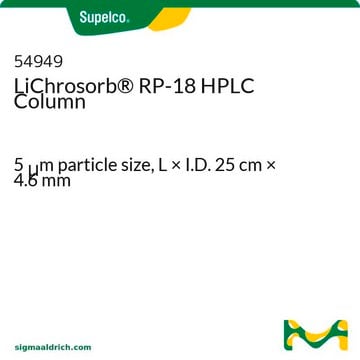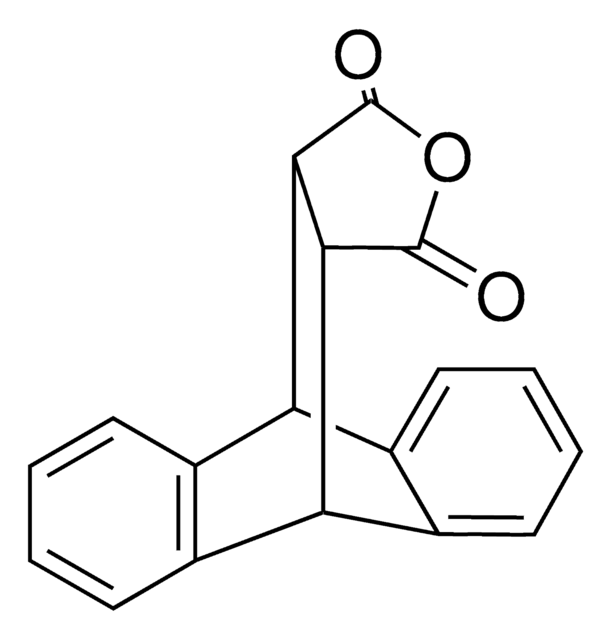63200
Maleic anhydride
puriss., ≥99.0% (NT)
Synonym(s):
2,5-Furandione
About This Item
Recommended Products
vapor density
3.4 (vs air)
Quality Level
vapor pressure
0.16 mmHg ( 20 °C)
grade
puriss.
Assay
≥99.0% (NT)
form
flakes
powder or crystals
autoignition temp.
870 °F
expl. lim.
7.1 %
bp
200 °C (lit.)
mp
51-56 °C (lit.)
52-54 °C
SMILES string
O=C1OC(=O)C=C1
InChI
1S/C4H2O3/c5-3-1-2-4(6)7-3/h1-2H
InChI key
FPYJFEHAWHCUMM-UHFFFAOYSA-N
Looking for similar products? Visit Product Comparison Guide
Related Categories
General description
Application
- Workplace air samples by capillary gas chromatography combined with electron capture detection (GC-ECD).
It may be used as a derivatization agent for fatty alcohol ethoxylates in:
- Industrial mixtures, cleaning products and river and sea waters by high performance liquid chromatography (HPLC) coupled with ultraviolet-visible (UV-Vis) diode array detection (DAD).
Other Notes
Signal Word
Danger
Hazard Statements
Precautionary Statements
Hazard Classifications
Acute Tox. 4 Oral - Eye Dam. 1 - Resp. Sens. 1 - Skin Corr. 1B - Skin Sens. 1A - STOT RE 1 Inhalation
Target Organs
Respiratory system
Supplementary Hazards
Storage Class Code
6.1D - Non-combustible acute toxic Cat.3 / toxic hazardous materials or hazardous materials causing chronic effects
WGK
WGK 1
Flash Point(F)
217.4 °F - closed cup
Flash Point(C)
103 °C - closed cup
Personal Protective Equipment
Regulatory Listings
Regulatory Listings are mainly provided for chemical products. Only limited information can be provided here for non-chemical products. No entry means none of the components are listed. It is the user’s obligation to ensure the safe and legal use of the product.
PDSCL
Deleterious substance
PRTR
Class II Designated Chemical Substances
ISHL Indicated Name
Substances Subject to be Indicated Names
ISHL Notified Names
Substances Subject to be Notified Names
JAN Code
63200-RSAMPLE-F:
63200-500G-F:4548173944722
63200-5KG-F:
63200-BULK-F:
63200-VAR-F:
63200-100G-F:4548173944715
63200-1KG-F:
Choose from one of the most recent versions:
Already Own This Product?
Find documentation for the products that you have recently purchased in the Document Library.
Customers Also Viewed
Articles
Innovation in dental restorative materials is driven by the need for biocompatible and natural-appearing restoration alternatives. Conventional dental materials like amalgam and composite resins have inherent disadvantages.
Our team of scientists has experience in all areas of research including Life Science, Material Science, Chemical Synthesis, Chromatography, Analytical and many others.
Contact Technical Service












